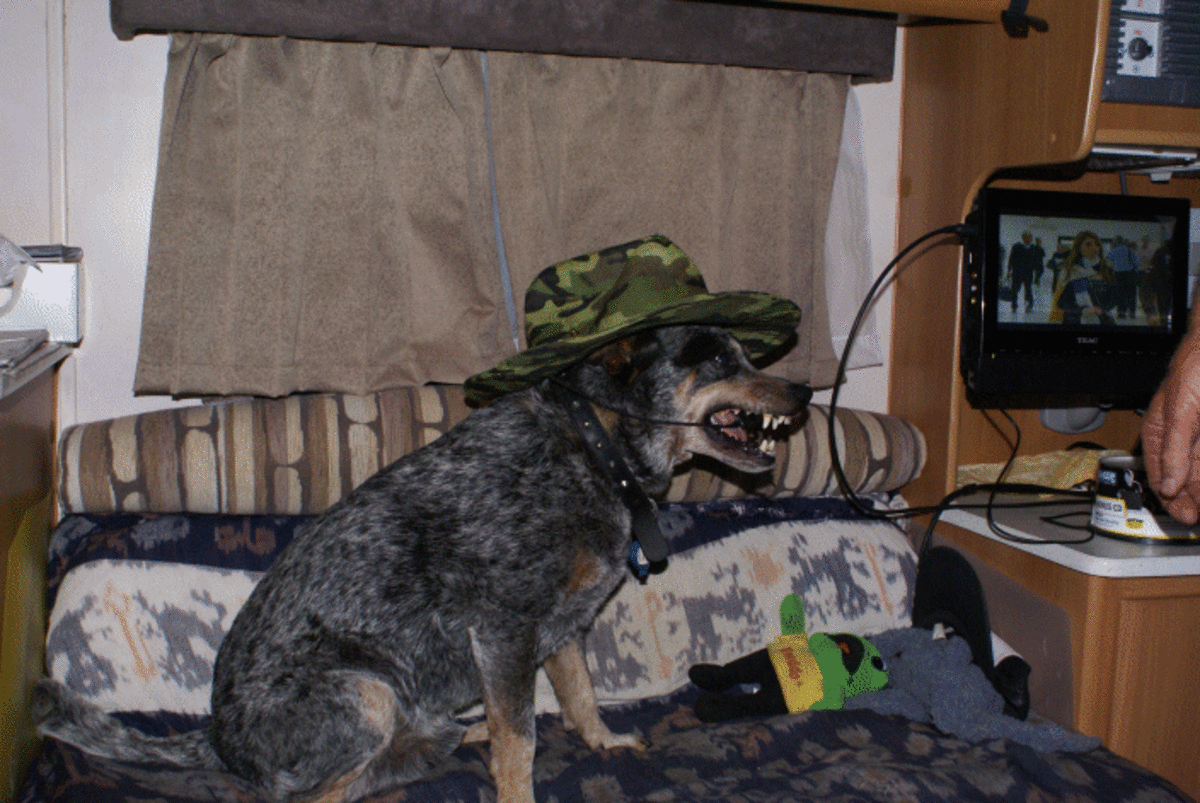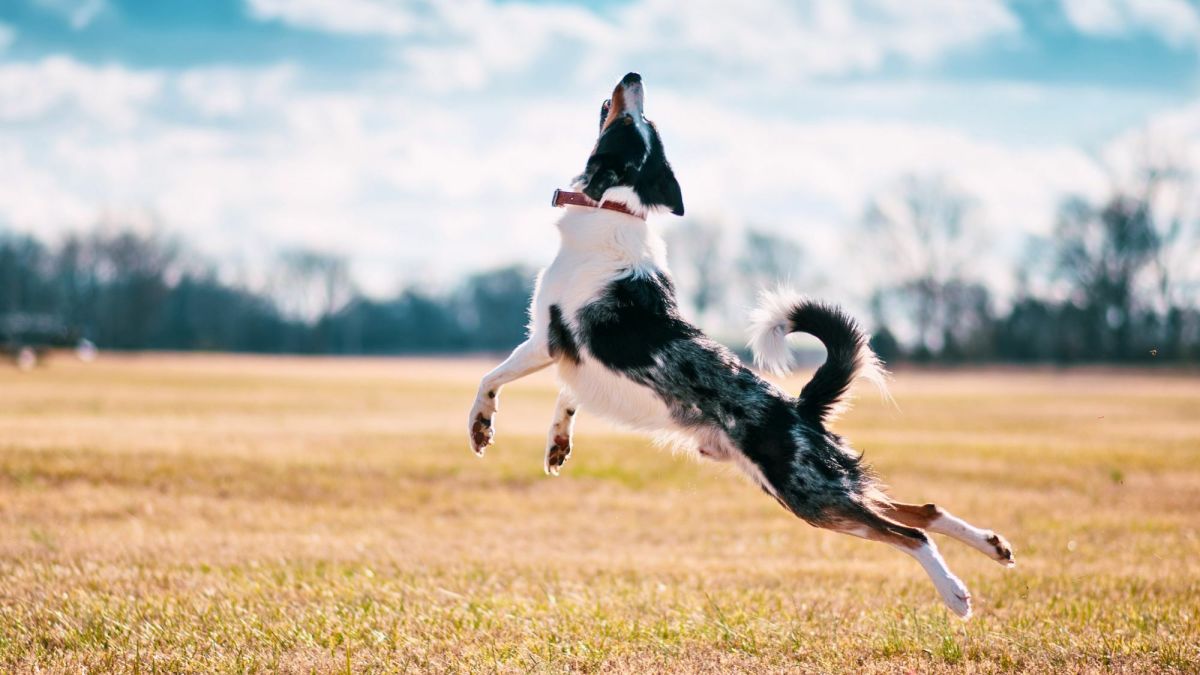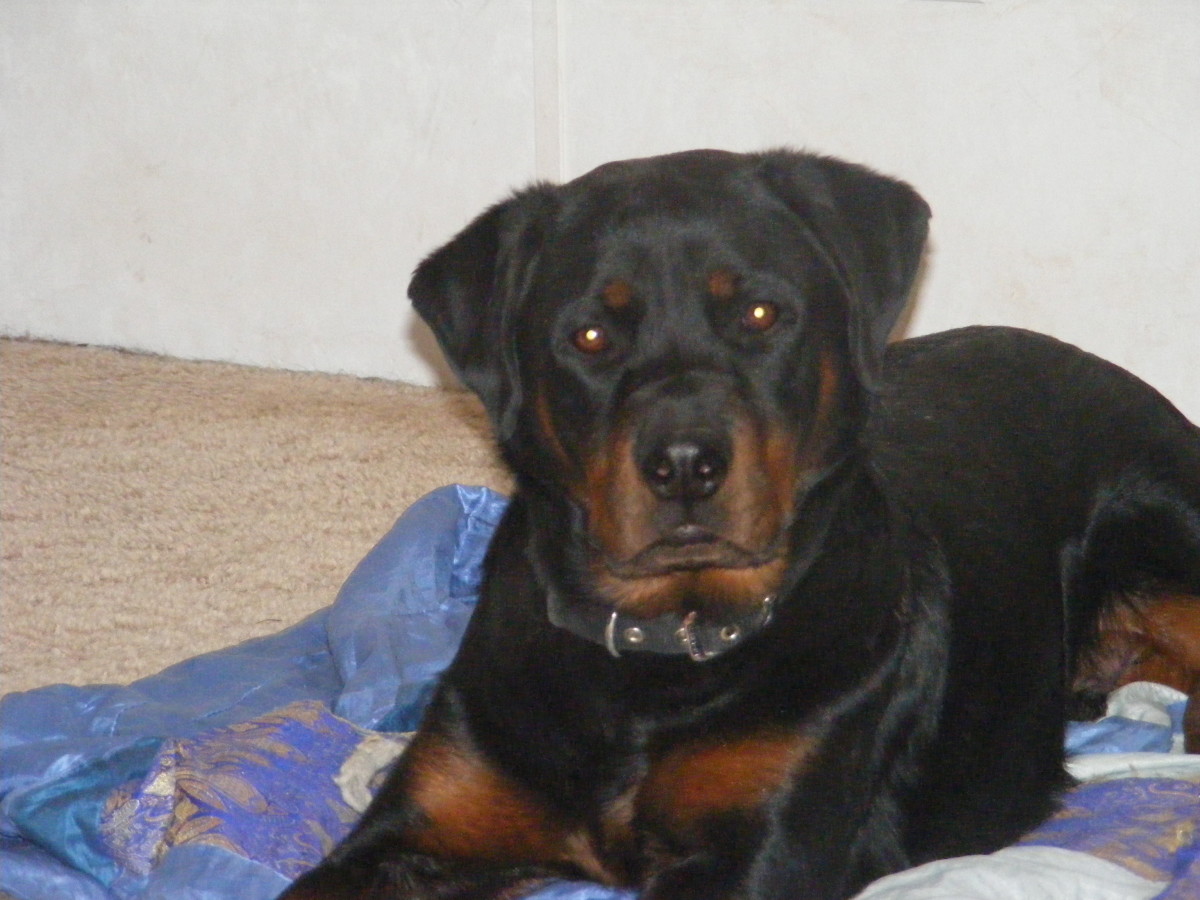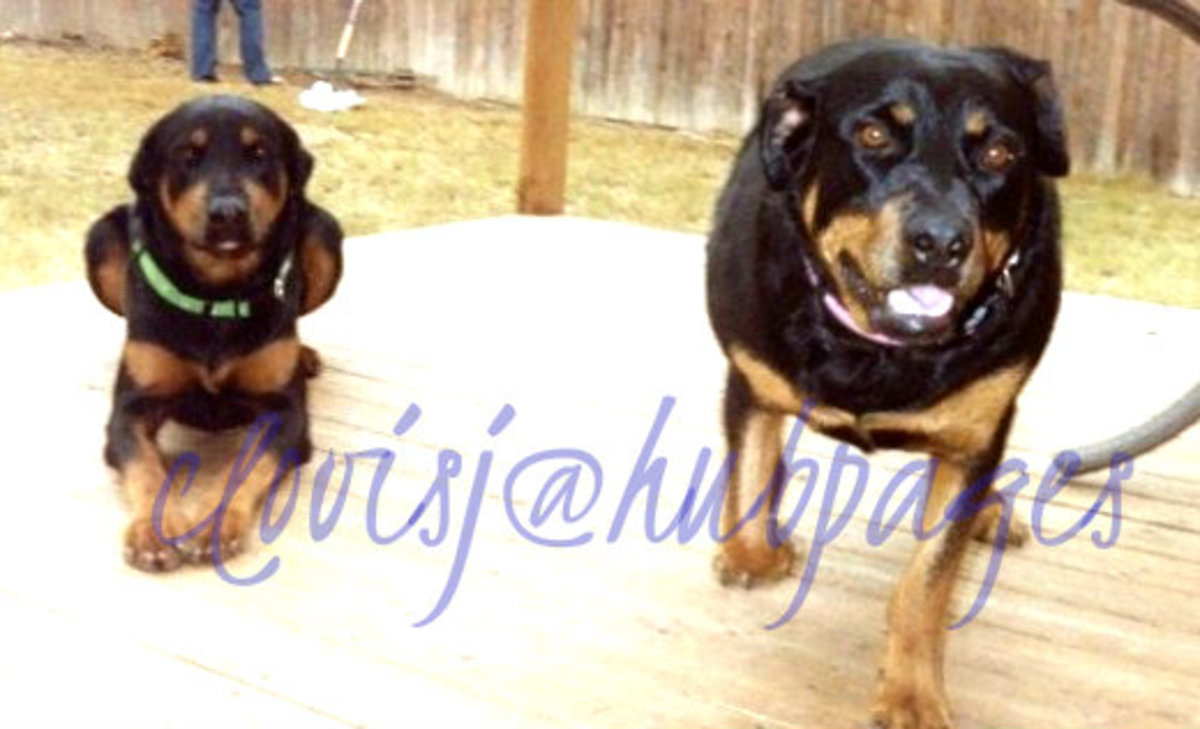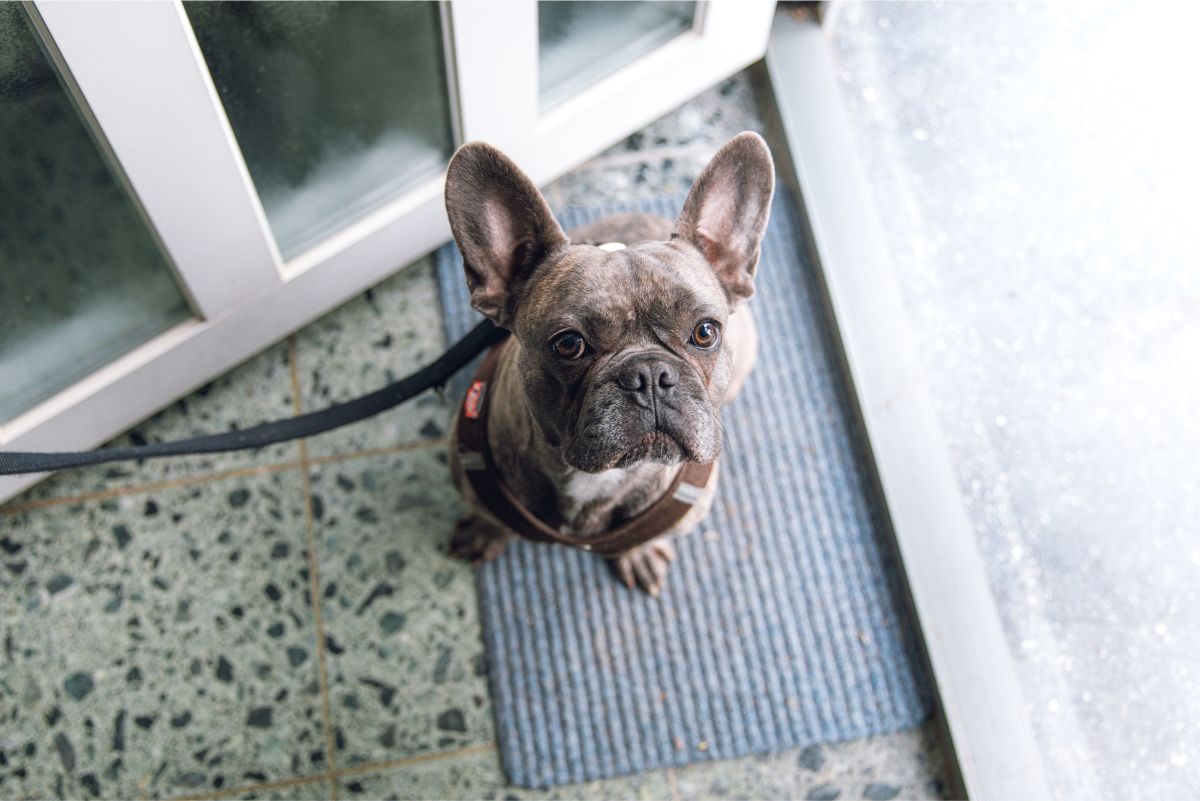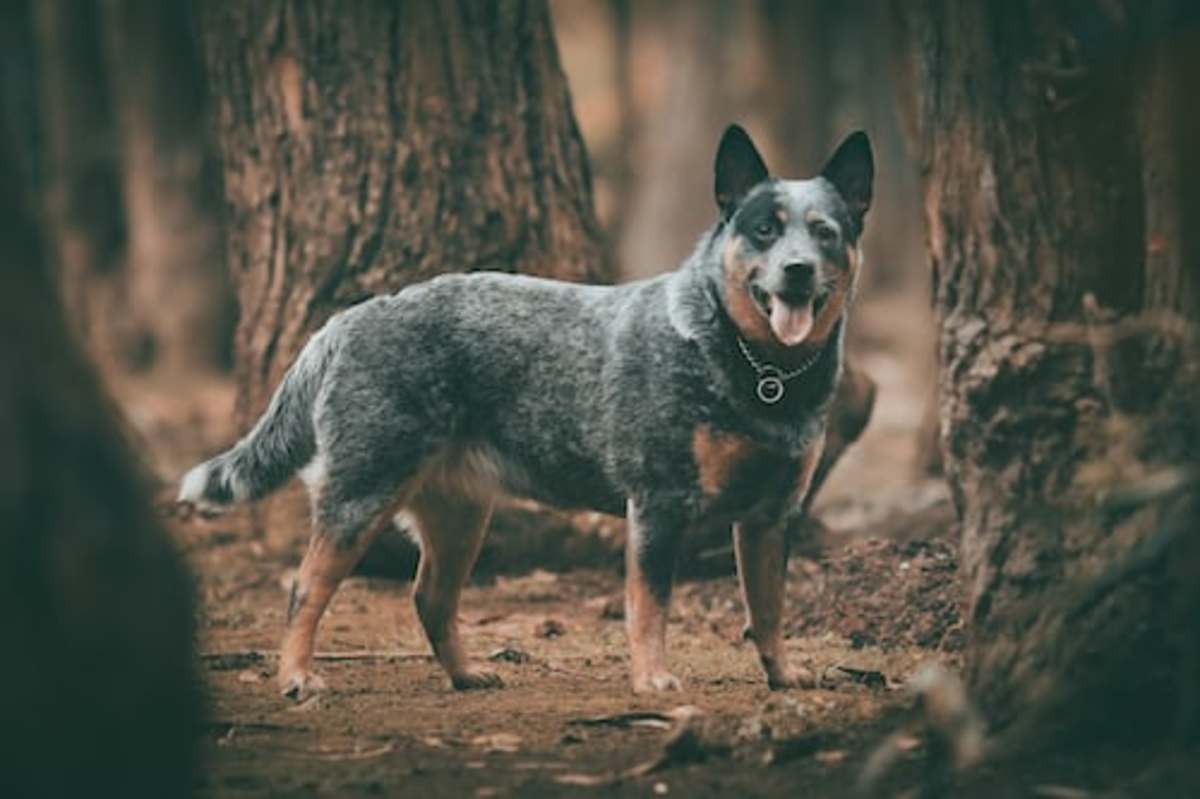Basic Obedience Training Part 1
When teaching basic obedience to a dog, the trainer should lure the dog into the desired position rather than say the command or give the cue and expect that he knows it. Dogs do not know cues until they are taught them, and saying or giving them multiple times in a row will not help. The dog will eventually learn that he sits after the third "sit" or lies down after the fifth "down."
In part One of basic obedience, I've sectioned off the basics of teaching you dog his name, settle, leave it and take, as well as, give.
Name
To begin any training, the dog must know its name. To teach the its name:
Say the name in an excited tone to get the dog to look at you.
- Treat the dog for looking at you.
- Repeat this until you can say the dog's name in a normal tone
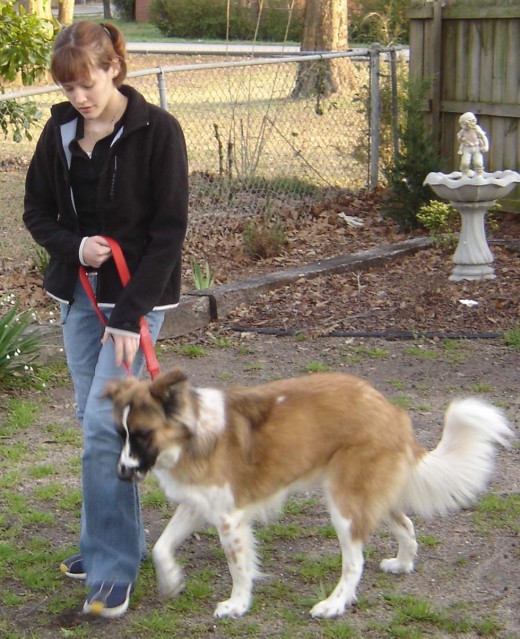
Walking on a Leash
- Begin teaching the dog how to walk nicely on a leash by introducing it to "Let's go," meaning walk with me without pulling.
- You should teach the dog to stand nicely while on the leash by holding the leash with both hands against his body and rewarding the dog every time it is calm. If the dog begins to pull, lean backwards or in the opposite direction, or take a few steps in the opposite direction; do not pull back.
- As soon as the dog looks back, verbally praise it and reward it with treats.
- Once the dog learns to stand nicely, begin to walk. Continue walking until the dog starts to pull, reward periodically.
- When the dog starts to pull, stop walking and wait until the dog looks at you, as soon as there is slack on the leash, begin walking again.
Because what the dog wants to do is move, which is why he pulls, so by stopping the movement until he has let slack in the leash, he learns the by walking with a loose lead, he gets what he wants. With this method, the dog will eventually learn to walk nicely on a leash if you continue this for a few weeks or so.
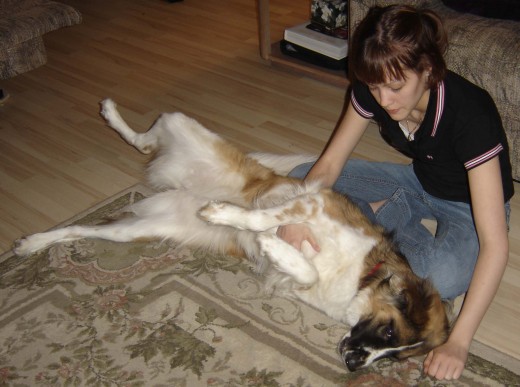
Settle
A nice way of controlling a dog is to teach it to be calm and settled on cue.
You should lure the dog into a sit, then down position.
- Do not give the treat just yet. Keep the treat in a closed fist on the floor.
- Begin to pet and massage the dog, praising it in a calm voice.
- Give the treat to the dog, unless he is pawing or nibbling at you hand; if he is, you should wait for the dog to stop before giving him the treat.
- This should be repeated several times.
- The next step is to wait until the dog begins to relax, and give it the cue, "settle," after lying down.
Do not reward the dog at the end because it must learn that being passive gains him the reward. Treating at the end will only teach the dog that the behavior is over. You must remember to release the dog from the settle position.
You should perfect ‘settle,' in that the command is given, so the dog settles down. You should teach the dog that you do not have to be there, beside him, for him to ‘settle.' The dog should be able to ‘settle' reliably whenever you feel he is getting rambunctious
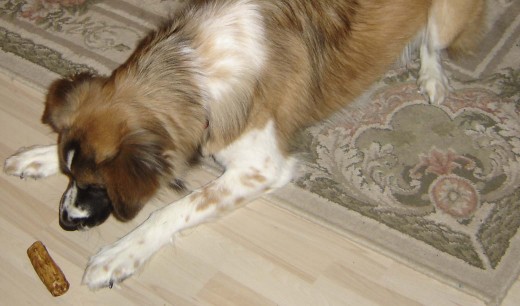
Leave It
This command can be very useful and can even save a dog's life. You would use the phrase, ‘leave it,' when something drops on the floor that the dog shouldn't touch. You can also use the phrase when he wants the dog to avoid something.
- Begin with one treat on the floor, away from the dog but not too far away. If the dog starts to go towards it, cover the treat with a hand or foot and pull the dog away.
- When the dog stops trying to get it, reinforce it with a treat from the other hand, giving the dog permission to "take it."
- You can also teach ‘take it' by allowing the dog to take the treat once, he looks up to you, the trainer.
- Repeat this steps several times.
Some dogs are more defiant to this command because it prevents them from getting something they want, but with practice any dog, no matter how stubborn or food-oriented, it may be. Once the dog learns the idea and doesn't approach the treat but looks up, instead, the trainer should add the cue, "Leave it." You should pull the dog away from the treat, instead of the taking the treat away from the dog because if the treat is taken away every time, the dog shouldn't learn that the treat will go away. Teaching ‘leave it' to a dog can prevent it from snatching pills of medications that may fall on the floor. Sometimes, you may not know what fell on the floor, so giving the dog the cue, will give you time to check it out before the dog eats something that it may not need to eat. This command is very useful, in that, it can stop a dog from chasing a cat or squirrel across a busy street, but it takes hard work to make this command efficient.
Basic Obedience Books
Give
Teaching a dog to ‘give' is teaching the dog to relinquish an object.
- Begin when the dog has a ball or a toy in his mouth and show him a treat.
- The dog should automatically drop the object in attempt to take the treat. When the dog does, praise him.
- After repeating the process, eventually the dog will start to drop the object reliably, add a cue, ‘give,' as the treat is offered.
- Once the dog responds to ‘give,' ask him to ‘give' without a visible treat, and when he complies, give him lots of praise and a hidden treat.
- Eventually, move to giving the rewards randomly.
Remember never to pull the object out of the dog's mouth; it will cause the opposite reflex and the dog's jaw will clamp with more force than before. And, never turn the ‘give' behavior into a chase game or shout at the dog from a distance because he will feel threatened and run away.


